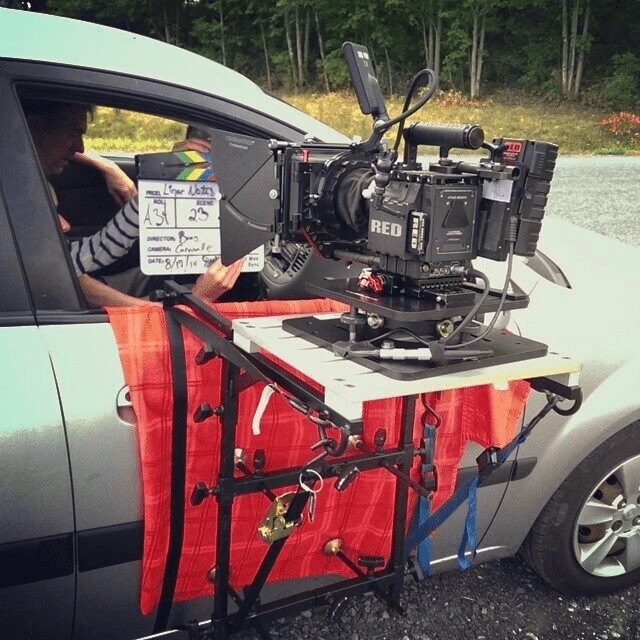We were lucky to catch up with Gregory Bray recently and have shared our conversation below.
Gregory, thanks for joining us, excited to have you contributing your stories and insights. Alright – so having the idea is one thing, but going from idea to execution is where countless people drop the ball. Can you talk to us about your journey from idea to execution?
Conceptualizing a film is a big part of the process. What is the story you’re wishing to share? Who is it for? What are the medium requirements you need to figure out? Once the idea is put together, whether it’s a beat outline for a documentary or a screenplay, you have to put your producer hat on and create the breakdown. It’s time to define and secure talent, location, crew, props, insurance, etc. You have to truly find a group of spirited collaborators to embark on independent film projects, which can feel like a double edged sword. On one hand, you get to make the film you wish to make without outside interests informing the story or the creative process–on the other hand, you have to work every moment to figure out how to make each part of it work. From financing through distribution, you are very much steering the project.

Great, appreciate you sharing that with us. Before we ask you to share more of your insights, can you take a moment to introduce yourself and how you got to where you are today to our readers.
For folks who may not know me, my name is Gregory Bray. I teach film and media production, theory, and writing at the State University of New York at New Paltz. As a child, I was asthmatic, so I spent a great deal of time indoors, especially during the winter. At a young age, I discovered film–contemporary and classic. I would spend hours at the library, looking at books on film and filmmakers, as well as criticism. In high school, my brother, John Patrick Bray, and I had a local access television show, where we reviewed films. New releases, classics, new to video. Mind you this was well before YouTube, our show ran from 1993 until we were both in graduate school in 2001. From there, I have worked for film commissions, local radio stations, and have worked on film and television sets.
I graduated from the New School in 2003, with an MA in Media Studies, and began my academic career. I was inspired by my professors who were able to bridge together research, creative work, and teaching. I wanted to follow suit, and I have been incredibly fortunate. I teach near where I grew up, I work with a wonderful team of professors who are also media scholars and media makers, and try to inspire young people to enter the industry I have a great deal of passion for–even when times are difficult. I completed my PhD in 2011 at the European Graduate School, where I worked with remarkable thinkers, scholars, and media makers, including Barbara Hammer, The Brothers Quay, and Claire Denis.
Professionally, I am most proud of my work in the classroom–students in my classes have earned multiple awards for their film work, and have had their films at a number of film festivals. I’m also proud of most of my own work, including a feature film, Liner Notes, which was at the Woodstock Film Festival back in 2016.

Do you think there is something that non-creatives might struggle to understand about your journey as a creative? Maybe you can shed some light?
Collaboration. It really is all about collaboration. When you create media work for clients, passion projects for yourself and a small audience, or even if you’re part of a larger endeavor, it is always about the people you meet and work with. Nothing is created in a vacuum, and even if we were to think about auteur theory, we have to bear in mind that film and video projects are made with many hands. And it *is labor. And there are times where that labor is very challenging–long days, being at the mercy of a budget, or, at times, the weather, you name it. That it all comes together is due to the spirit of the collaborators you’re working with, how your energies support eachother. I’m fortunate to have had many wonderful collaborators over the years I’ve been producing documentary, client, and narrative work.

For you, what’s the most rewarding aspect of being a creative?
There are so many rewarding aspects of being a creative, but among them has to be where an audience responds to a film I have worked on. It’s gratifying when you’ve put in so much love and labor into a work that then has a meaningful connection to an audience. When I saw one of my documentaries, A Horse Connection, a film about equine assisted therapy for special needs children premiere with an audience–it was gratifying to know I made some kind of contribution to an important conversation. Even a fiction piece, like ‘Escapism,’ which speaks to how escapist entertainment can be helpful to people who have experienced trauma–and seeing that message resonate–it’s incredible. There’s no other feeling like it. It’s wonderful to know there’s an audience out there for your work, and that you’re able to engage with them.
Contact Info:
- Website: https://hawksites.newpaltz.edu/brayg/
- Instagram: https://www.instagram.com/gladmaninhat/
- Facebook: https://www.facebook.com/gregg.bray/
- Linkedin: https://www.linkedin.com/in/greggbray/


Image Credits
Sugarloaf Film Festival Photo by Jennifer Bray


